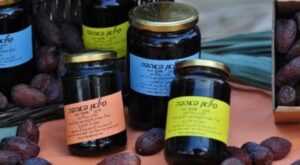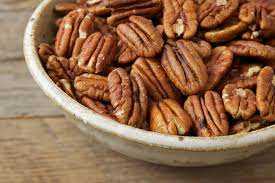YUMMY “AFTER THE HOLIDAYS” ADDITIONS FROM CHUBEZA
Kibbutz Samar’s amazing date groves have been preparing outstanding silan (date honey) for the past few years, and now they’re also beginning to make it available in jars so that we can offer them to you for sale! The silan is made from 100% fruit, with no additions whatsoever, in various types of dates. Now, you can select your silan from this range of Samar dates: barhi, medjul, zahidi and dekel nur, each with its own distinctive taste. Definitely worth a taste!!
Today the silan is being produced as a “homemade” product, and has yet to receive certification. As noted, it is 100% produced from Samar dates. Samar holds certification for kashrut as well as international organic certification. The silan has been laboratory tested and it is safe (and absolutely delicious). Samar is now in the process acquiring both kashrut and organic certification for the silan, which should be granted within 2021.
PRICES: 450ml jar – 25.50 NIS 850 ml jar – 38.00 NIS
__________________
The Schiff Family of Moshav Bet Chanan grows organic fruits, which we purchase to fill some of your fruit boxes. Now they are pleased to offer shelled organic pecans from their own pecan grove:
PRICES: 250 gr package – 25 NIS 500 gr package – 61 NIS
Both wonderful new products are available for purchase – and delivered right in your boxes – via the Chubeza Order System. Order today!
_______________________________
Lettuce Ask Some Existential Questions
When I slice a salad, I always start with several fresh, crisp lettuce leaves. Even a salad consisting solely of lettuce would be just fine with me. Sometimes this brings my fellow diner to try to fish out only the “true vegetables” from the bowl, while musing aloud as to why I think he is a rabbit…
There are those who believe that lettuce is a mere garnish meant to be pushed aside in order to get to real food, and that filling the salad bowl with lettuce is deceiving: the bowl full of lettuce creates volume, yet in fact this is just empty fare. Or is it? To fundamentally disprove the hype that lettuce is actually Styrofoam disguised as a vegetable, lettuce dedicate this week’s Newsletter in praise of….lettuce!
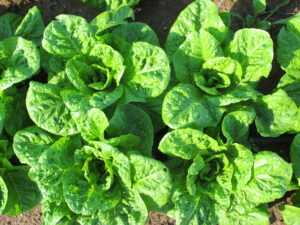
“Lettuce” in English, “laitue” in French, all stem from the Latin Lactuca, because when we cut open the core, it secretes a lactic resin. The Greeks viewed lettuce as bearing medicinal attributes, and Hippocrates, the patron of medicine, believed it to be beneficial to one’s health. The doctor of the Roman Emperor Augustus endeared this healthy vegetable to the Romans and their successors, who believed it to regulate bowel movement in young people, and help older people sleep soundly.
Today we know that this lactic liquid, whose scent is similar to opium, contains alkaloids, and that all the lettuce varieties are somewhat narcotic. There are those who say that eating large quantities of lettuce can lead to stupor and even loss of consciousness. But in normal quantities, lettuce settles the digestive tract, relieves pain, encourages sleep and curbs coughs. A warm lettuce leaf extract eases asthma attacks and bronchial spasms.
Folk medicine employs a potion comprised of a lettuce-leaf infusion to relieve coughs and skin burns. Eating lettuce leaves or drinking a lettuce seed brew can benefit eye infections, nephritis, hepatitis and stomachaches. Lettuce has a rich water-content, therefore prevents thirst and encourages urination. Lettuce is recommended for nursing mothers to boost lactation. Nissim Krispil writes that lettuce is beneficial for those suffering from anemia, hair loss, constipation, liver malfunction, and insomnia.
Green lettuce is rich in vitamins K, A, and the B vitamin group, including folic acid. It also boasts some vitamin C, calcium, potassium and iron content. Dark-leaf lettuce is a source of the antioxidant Lutein, which is said to improve vision. Purple lettuce contains Anthocyanins, antioxidants which slow the aging process.
Various lettuce varieties grow wild in Europe, the Mediterranean Basin, Asia Minor and India. It is thought to have originated in Southeast Europe and Western Asia. Lettuce was cultivated and raised by the Chinese and Egyptians in ancient times, where it was an honored and respected vegetable. The Egyptians dedicated it to the God of Growth, and the Persians, who viewed lettuce as a delicacy, served it to their kings. It appears in the Bible, where it is coined Maror (bitter herb), which you remember well from your Passover Seder. Mishna sages name five types of bitter herbs that are considered “Maror.” One such type is “chasah,” for God had mercy (“chas”) on the People of Israel (Pesachim 39, 1). This is probably the origin of the modern Hebrew word “chasah” for lettuce.
There are almost 100 lactic resin weeds belonging to the Lactuca variety scattered across the Northern Hemisphere. Most can only be used for decorative purposes, as they are bitter, toxic and inedible. Only the Lactuca Sativa includes all the edible lettuces. Salad lettuce is not a plant that grows wild (like hyssop or sage, which you can find on a picnic in the Jerusalem Hills, very similar to what you grow in your garden). It is not clear when lettuce arrived in the world, but archeological findings place it in ancient times, when Egyptian gardeners began changing the wild lettuce for a cultivated variety. Years of selection, growing only the less-bitter lettuce and keeping its seeds to pass on to the next generation of gardeners, created a different plant from its wild ancestor. And yet, in honor of its ancestral merits, the salad lettuce retained two of its ancient characteristics: when it blooms and creates seeds, it is bitter and inedible. Difficult growing conditions, like heat waves and the like, will also produce a bitter lettuce. Another characteristic: lettuce seeds find it very difficult to sprout if they are covered in earth. They need light to sprout, so when you sprout lettuce, cover the seeds with a very light layer of earth or don’t cover at all.
Some different varieties of lettuce:
-
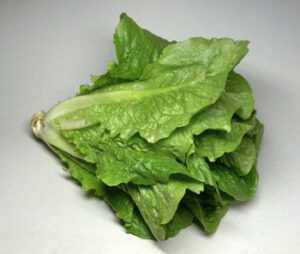
- חסה ערבית – עליה מוארכים ובשרניים במרכזם. Romaine lettuce. Its leaves are elongated and fleshy in the center.
-
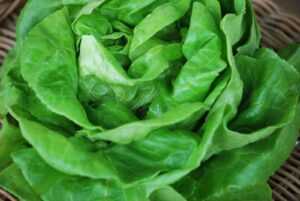
- חסה משי, ירוקה/סגולה: זן הולנדי בעל עלים עגולים, רכים ומעודנים. חסות הסלנובה שייכות לסוג הזה. Butterhead lettuce, in green or purple: of Dutch origin, with round, soft, delicate leaves.Salanova lettices belong to this group.
-
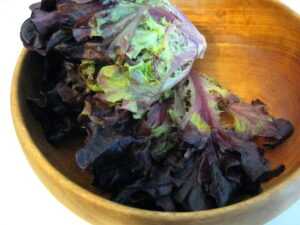
- חסה עלה אלון, ירוקה/סגולה: בעלת עלים ירוקים ארוכים ומפוצלים. Oak leaf lettuce, green or purple, with long green lobed leaves.
-
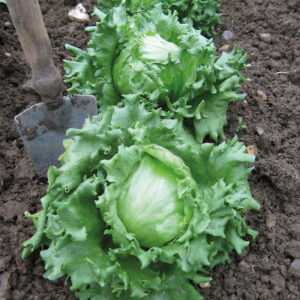
- חסה אייסברג: מוצאה מאמריקה, ולכן קוראים לה גם חסה אמריקאית, היא עגולה ודמוית ראש כרוב. עליה צפופים, פריכים ועסיסיים. Iceberg lettuce: originall from America, thus also termed “American lettuce.” It resembles a head of cabbage, with dense, crispy and juicy leaves.
-
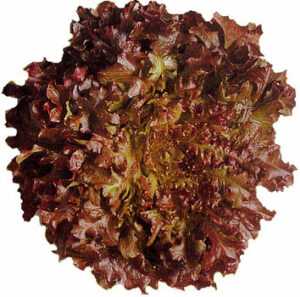
- חסה מסולסלת ירוקה/סגולה: מוצאה מאיטליה ועליה המסולסלים ירוקים בחלקם התחתון וסגולים בקצוות. Green or red leaf lettuce: originally from Italy, its curly leaves are green on the bottom and purple at the edges.
Romaine lettuce grows year round in Israel. Each season we plant a different variety according to the temperature. Though lettuce thrives in summer and winter, it still needs support and protection: usually we grow it in our open fields, but during wintertime we guard some plants in our nethouses while others in the plastic tunnels. In summer we spread a shade net to protect the lettuce plants from the heat. The red lettuce, curly green or red leaf lettuce and the icebergs are much more delicate and only agree to grow in autumn or spring, which is when we enjoy a larger selection of lettuce varieties in our boxes.
So although lettuce is a permanent guest, don’t take her for granted! Give her a little rub of appreciation and tell her that although she’s almost always there for us, you still notice her every week and are happy to see her. Rest assured, she will generously express her gratitude. You can find surprising recipes for lettuce in our recipe section. Give it a peek.
Wishing us a good week, one in which we continually appreciate the steady components among us,
Alon, Bat Ami, Dror, orin and the Chubeza team
______________________________
WHAT’S IN THIS WEEK’S BOXES?
Monday: Green fava beans/snow peas/broccoli, green lettuce, fresh garlic, beets/carrots, cucumbers, tomatoes, cauliflower/slice of pumpkin, parsley/coriander/dill, kohlrabi/leeks, Swiss chard/red lettuce, new onions. Special gift for all: kale!
Large box, in addition: Parsley root, zucchini/potatoes, white or purple cabbage.
FRUIT BOXES: Banana/lemon, red apples, avocados, oranges, pomelit.
Wednesday: Green fava beans/cauliflower, green lettuce, fresh garlic, beets, potatoes, cucumbers, tomatoes, parsley/coriander/dill, Swiss chard, new onions, parsley root/white or purple cabbage. Special gift for all: kale/red lettuce!
Large box, in addition: Snow peas/leek, zucchini/carrots, kohlrabi/fennel.
FRUIT BOXES: Banana/lemon, red apples, avocados, oranges, pomelit/clemantinot.
___________________________
EVERYTHING YOU’VE ALWAYS WANTED TO KNOW—BUT NEVER DARED TO ASK– ABOUT COOKING WITH LETTUCE:
Creamy lettuce soup (chicken broth can be replaced with vegetable broth)


